Storing vegetables without a refrigerator is an age-old practice that has been used by our ancestors for centuries.
Although refrigeration has made our lives much easier, it is not always accessible or feasible, especially in areas with limited electricity or during emergencies.
Additionally, some vegetables are better off stored outside the refrigerator, as cold temperatures can cause them to lose flavor and texture.
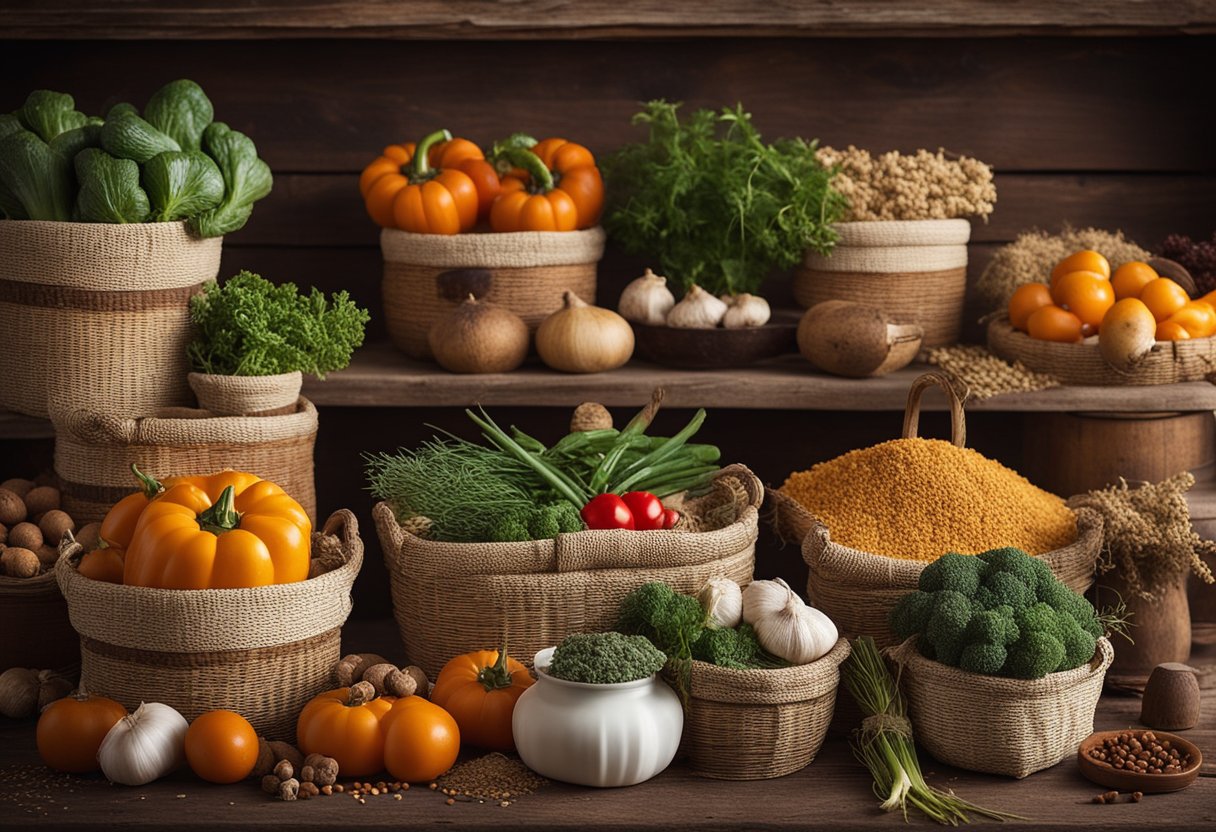
Understanding the basics of vegetable storage is essential to maximize freshness and prevent spoilage. Different vegetables have different storage requirements, depending on their moisture content, ripeness, and ethylene production.
For example, leafy greens like lettuce and spinach should be kept dry and away from moisture, while root vegetables like potatoes and onions prefer cool, dark, and dry conditions.
By knowing the ideal conditions for vegetable storage, you can extend their shelf life and reduce food waste. There are also alternative storage methods that you can use, such as canning, pickling, sun-drying, and sand storage.
With a little bit of experimentation and creativity, you can find the best ways to store your vegetables without a refrigerator and enjoy their freshness and flavor for longer.
Key Takeaways
- Understanding the ideal conditions for vegetable storage is crucial to maximize freshness and prevent spoilage.
- Different vegetables have different storage requirements, depending on their moisture content, ripeness, and ethylene production.
- Alternative storage methods such as canning, pickling, sun-drying, and sand storage can be used to store vegetables without a refrigerator.
Understanding Vegetable Storage Basics
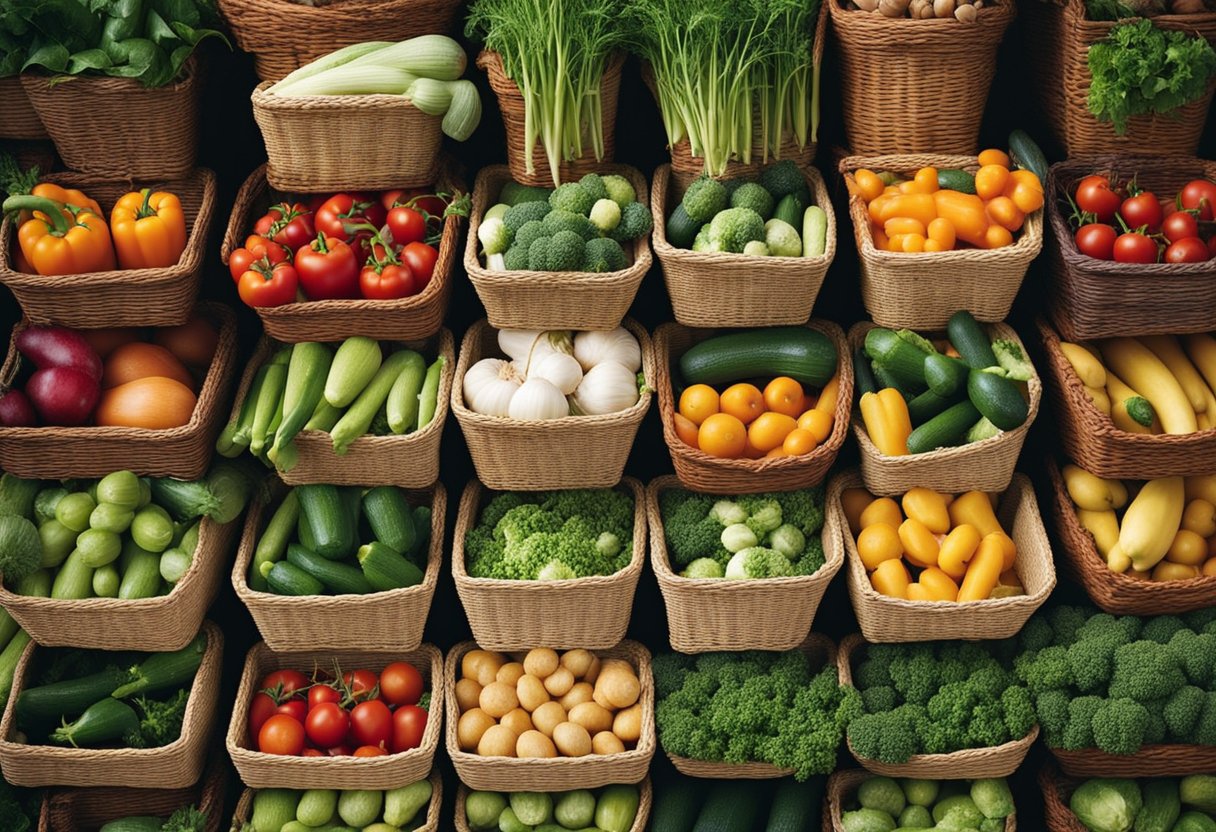
As a home cook or gardener, it’s essential to know how to store vegetables properly to avoid spoilage and waste.
While refrigeration is the most common method, many vegetables can be stored without refrigeration if you follow a few simple guidelines.
Temperature and Humidity
Temperature and humidity are two critical factors to consider when storing vegetables. Most vegetables prefer cool, dry environments with good air circulation.
The ideal temperature range is between 32°F and 60°F, and the relative humidity should be around 85%.
However, some vegetables, such as leafy greens, prefer higher humidity levels, while others, like onions and garlic, prefer lower humidity levels.
It’s essential to store vegetables with similar temperature and humidity requirements together.
Darkness
Light can cause some vegetables to sprout or turn green, indicating that they are past their prime. Therefore, it’s best to store vegetables in a dark place, such as a pantry or root cellar.
If you don’t have a root cellar, you can use a paper bag or wrap vegetables in a cloth to keep them in the dark.
Ethylene Gas
Ethylene gas is a natural plant hormone that can cause produce to ripen and spoil faster. Some fruits and vegetables, such as apples, bananas, tomatoes, and avocados, produce more ethylene gas than others.
Storing ethylene-producing fruits and vegetables with ethylene-sensitive produce, such as leafy greens and carrots, can cause them to spoil faster.
Excess Moisture
Excess moisture can cause vegetables to rot quickly. Therefore, it’s essential to store vegetables in a well-ventilated area to prevent moisture buildup.
You can use wire mesh or baskets to store vegetables or place them on a cutting board to allow air circulation.
Root Vegetables
Root vegetables, such as potatoes, sweet potatoes, beets, and carrots, can be stored for several weeks or even months if stored correctly.
They prefer cool, dark, and dry environments with good air circulation. You can store them in a root cellar, basement, or pantry.
Leafy Greens
Leafy greens, such as lettuce, kale, and spinach, are delicate and prone to spoilage. They prefer high humidity levels and should be stored in the crisper drawers of your refrigerator.
However, you can also store them in a plastic bag or wrap them in a cloth to keep them moist.
Other Vegetables
Other vegetables, such as peppers, cucumbers, and tomatoes, prefer slightly higher temperatures and can be stored on your kitchen countertop. However, they should be kept away from direct sunlight and ethylene-producing fruits.
In conclusion, storing vegetables without refrigeration is possible if you follow the right guidelines. It’s essential to consider temperature, humidity, darkness, ethylene gas, and excess moisture to keep your fresh produce fresh for longer.
Ideal Conditions for Vegetable Storage
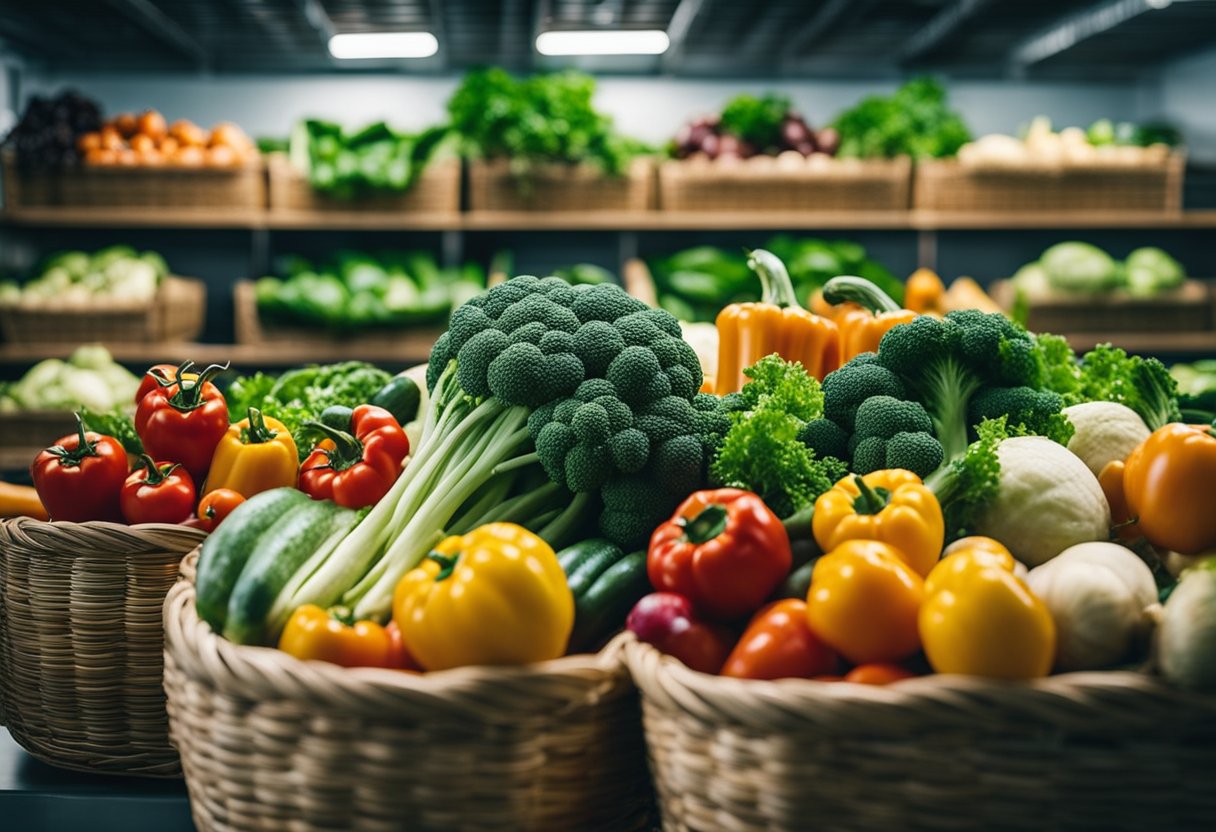
When it comes to storing vegetables without a refrigerator, it’s important to create the right environment to keep them fresh for as long as possible. Here are some ideal conditions to consider:
Temperature
Vegetables generally prefer cool temperatures, but not too cold. The ideal temperature range for most vegetables is between 50°F and 70°F (10°C and 21°C).
Temperatures that are too high can cause vegetables to ripen and spoil quickly, while temperatures that are too low can cause them to freeze and become damaged.
Humidity
Humidity is another important factor to consider when storing vegetables. Vegetables that are stored in a dry environment can quickly lose moisture and become wilted or dried out.
On the other hand, vegetables that are stored in a humid environment can become moldy or rot.
The ideal humidity range for most vegetables is between 85% and 95%. To maintain the right level of humidity, you can store vegetables in a container with a lid or cover them with a damp cloth or paper towel.
Darkness
Many vegetables prefer to be stored in a dark environment. Exposure to light can cause vegetables to sprout, turn green, or become bitter. To keep vegetables fresh, store them in a dark pantry or cabinet.
Air Circulation
Proper air circulation is important for preventing moisture buildup and mold growth. When storing vegetables, make sure to avoid overcrowding them and leave some space between each item.
You can also use a wire basket or mesh bag to promote air circulation.
By creating the ideal conditions for vegetable storage, you can keep your produce fresh for longer without the need for a refrigerator.
Storing Specific Vegetables
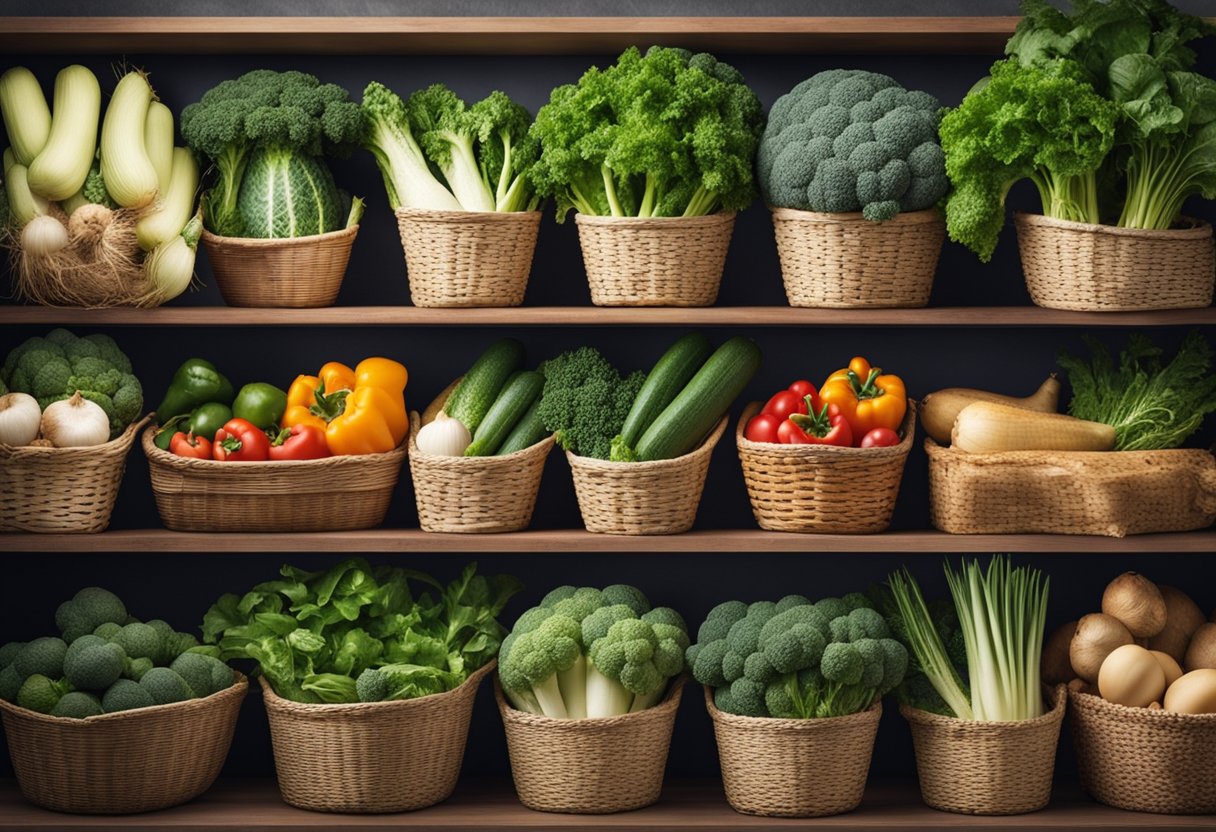
When it comes to storing vegetables without refrigeration, some vegetables fare better than others. Here are some tips on how to store specific vegetables:
Potatoes
Potatoes should be stored in a cool, dark place with good ventilation. Avoid storing them in plastic bags, as they can trap moisture and cause the potatoes to rot. Instead, store them in a paper bag or a breathable container. Check them regularly for any signs of sprouting or decay.
Onions
Onions can be stored in a cool, dry place with good ventilation. Avoid storing them in plastic bags, as they need to breathe.
A mesh bag or a basket works well for storing onions. Keep them away from potatoes, as the gases they release can cause each other to spoil faster.
Tomatoes
Tomatoes should be stored at room temperature, away from direct sunlight. Avoid storing them in the fridge, as it can cause them to lose flavor and texture.
If they are not yet ripe, you can speed up the ripening process by placing them in a paper bag with an apple or a banana.
Carrots
Carrots can be stored in a cool, dry place with good ventilation. Avoid storing them in plastic bags, as they can trap moisture and cause the carrots to rot.
Instead, store them in a paper bag or a breathable container. Check them regularly for any signs of decay.
Avocado
Avocados should be stored at room temperature until they are ripe. Once they are ripe, you can store them in the fridge to slow down the ripening process.
If you only use half an avocado, store the other half with the pit still in it and wrap it tightly in plastic wrap to prevent oxidation.
Leafy Greens
Leafy greens such as lettuce, kale, and spinach should be stored in a cool, dry place with good ventilation. Avoid washing them until you are ready to use them, as excess moisture can cause them to wilt.
You can store them in a breathable container or a plastic bag with a paper towel to absorb any excess moisture.
Citrus
Citrus fruits such as oranges, lemons, and limes can be stored at room temperature for a few days. If you want to keep them for longer, you can store them in the fridge.
Avoid storing them in plastic bags, as they need to breathe. A mesh bag or a basket works well for storing citrus.
Squash
Squash should be stored in a cool, dry place with good ventilation. Avoid storing them in the fridge, as it can cause them to lose flavor and texture.
If you have cut open a squash, store the remaining portion in the fridge wrapped tightly in plastic wrap.
Cabbage
Cabbage can be stored in a cool, dry place with good ventilation. Avoid washing it until you are ready to use it, as excess moisture can cause it to wilt.
You can store it in a breathable container or a plastic bag with a paper towel to absorb any excess moisture.
Mushrooms
Mushrooms should be stored in a cool, dry place with good ventilation. Avoid washing them until you are ready to use them, as excess moisture can cause them to spoil faster. You can store them in a breathable container or a paper bag.
By following these tips, you can store your vegetables without refrigeration and keep them fresh for longer.
Alternative Storage Methods
When it comes to storing vegetables without a refrigerator, there are several alternative methods you can use. Here are some methods that I have found to be effective:
Root Cellar
A root cellar is an underground room that is used for storing vegetables. It is a cool, dark, and humid environment that helps to preserve the freshness of vegetables. You can create a root cellar in your basement or in an underground room.
To create a root cellar, you will need to dig a hole in the ground and line it with rocks or bricks. You can also use a pre-made root cellar kit. Once you have your root cellar, you can store vegetables such as potatoes, carrots, onions, and garlic in it.
Pantry
A pantry is a great place to store vegetables that do not require refrigeration. You can store vegetables such as squash, pumpkins, and sweet potatoes in a pantry.
To store vegetables in a pantry, you can use wire mesh or bins to keep them organized. You can also use paper bags to store vegetables such as onions and garlic.
Sawdust
Sawdust is a great material to use for storing vegetables. It helps to absorb moisture and keep vegetables fresh.
To store vegetables in sawdust, you can fill a bucket with sawdust and place your vegetables in it. Make sure to keep the lid loose to allow for air circulation.
Rock Salt
Rock salt is another material that can be used to store vegetables. It helps to absorb moisture and prevent spoilage.
To store vegetables in rock salt, you can fill a bucket with rock salt and place your vegetables in it. Make sure to keep the lid loose to allow for air circulation.
These alternative storage methods can be effective in keeping your vegetables fresh without a refrigerator. By using these methods, you can extend the shelf life of your vegetables and reduce food waste.
Preventing Spoilage and Maximizing Freshness
As someone who loves to cook with fresh vegetables, I understand the importance of keeping them fresh for as long as possible.
When storing vegetables without a refrigerator, it’s important to take steps to prevent spoilage and maximize freshness.
One of the most important things to keep in mind is to store vegetables in a cool, dark place. This will help prevent them from sprouting and keep them from drying out. It’s also important to keep excess moisture away from your vegetables, as this can cause them to rot.
Another factor to consider is ethylene gas. Some vegetables, such as tomatoes and avocados, give off ethylene gas as they ripen, which can cause other vegetables to ripen and spoil more quickly.
To prevent this, it’s best to store ethylene-producing vegetables separately from other vegetables.
Good air circulation is also important when storing vegetables without a refrigerator. This helps prevent moisture buildup and allows the vegetables to breathe. A well-ventilated area, such as a mesh bag or wire basket, is ideal for storing vegetables.
Temperature control is another key factor in preventing spoilage and maximizing freshness. While it’s important to keep vegetables cool, it’s also important not to let them get too cold.
Some vegetables, such as potatoes and onions, can be damaged by cold temperatures. It’s best to store these vegetables in a cool, dry place, away from direct sunlight.
In summary, when storing vegetables without a refrigerator, it’s important to keep them in a cool, dark place with good air circulation.
It’s also important to keep excess moisture and ethylene gas away from your vegetables, and to be mindful of temperature control. By following these tips, you can help prevent spoilage and maximize the freshness of your vegetables.
Historical and Regional Vegetable Storage Practices
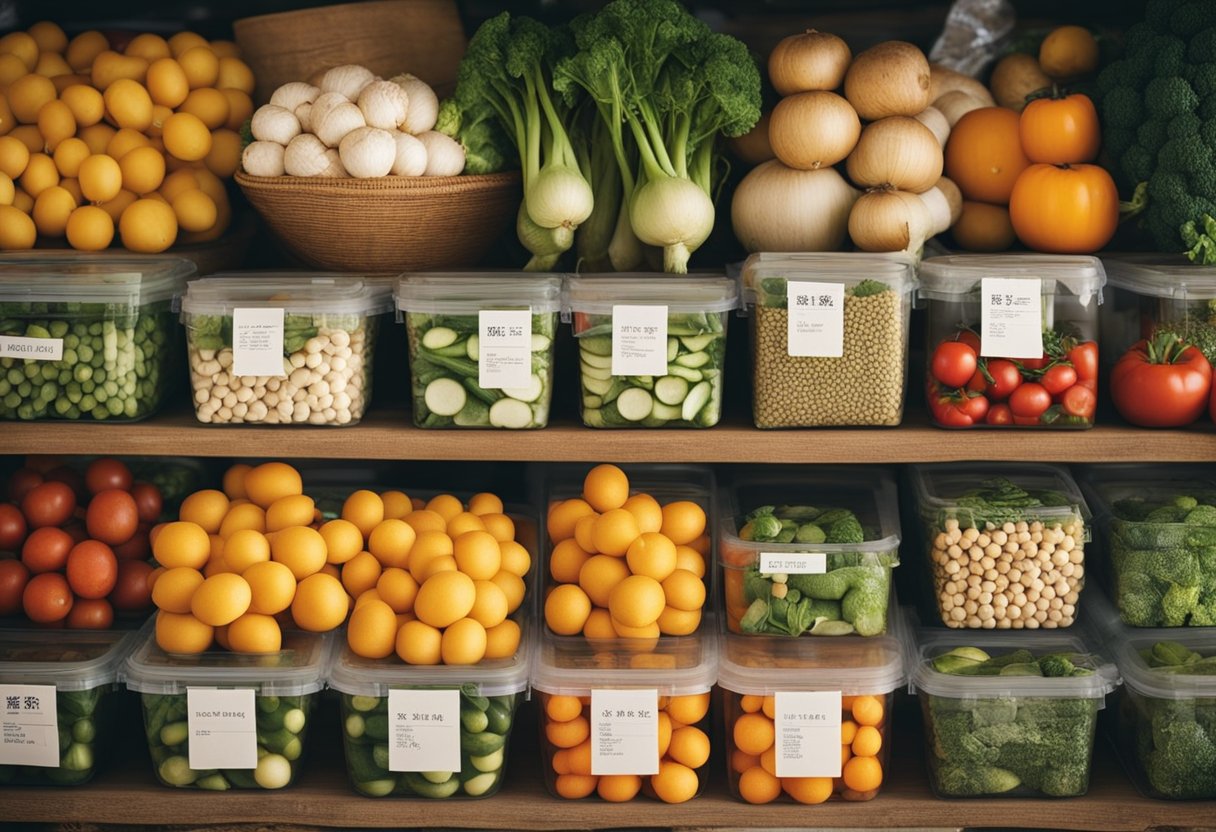
Throughout history, people have developed various methods to store vegetables without refrigeration. These methods were often based on the local climate, available resources, and cultural practices.
In Australia, for example, indigenous people used to store yams and other root vegetables in underground pits.
These pits were lined with grass and covered with soil to maintain a cool and moist environment. The vegetables could then be kept for several months, providing a reliable food source during the dry season.
In England, traditional vegetable storage methods included using root cellars, which were often located beneath houses or barns. These cellars were designed to maintain a stable temperature and humidity level, which helped to prevent spoilage.
A hygrometer, which measures relative humidity, was often used to monitor the conditions in the cellar.
In other parts of the world, people used different techniques to store vegetables. For example, in India, vegetables were often dried in the sun and then stored in clay pots.
In Japan, pickling was a common way to preserve vegetables, using ingredients like salt, vinegar, and miso paste.
Overall, historical and regional vegetable storage practices demonstrate the ingenuity and resourcefulness of people in finding ways to preserve food without modern technology.
While some of these methods may not be practical or suitable for everyone, they offer valuable insights into how we can reduce food waste and increase self-sufficiency.
Conclusion
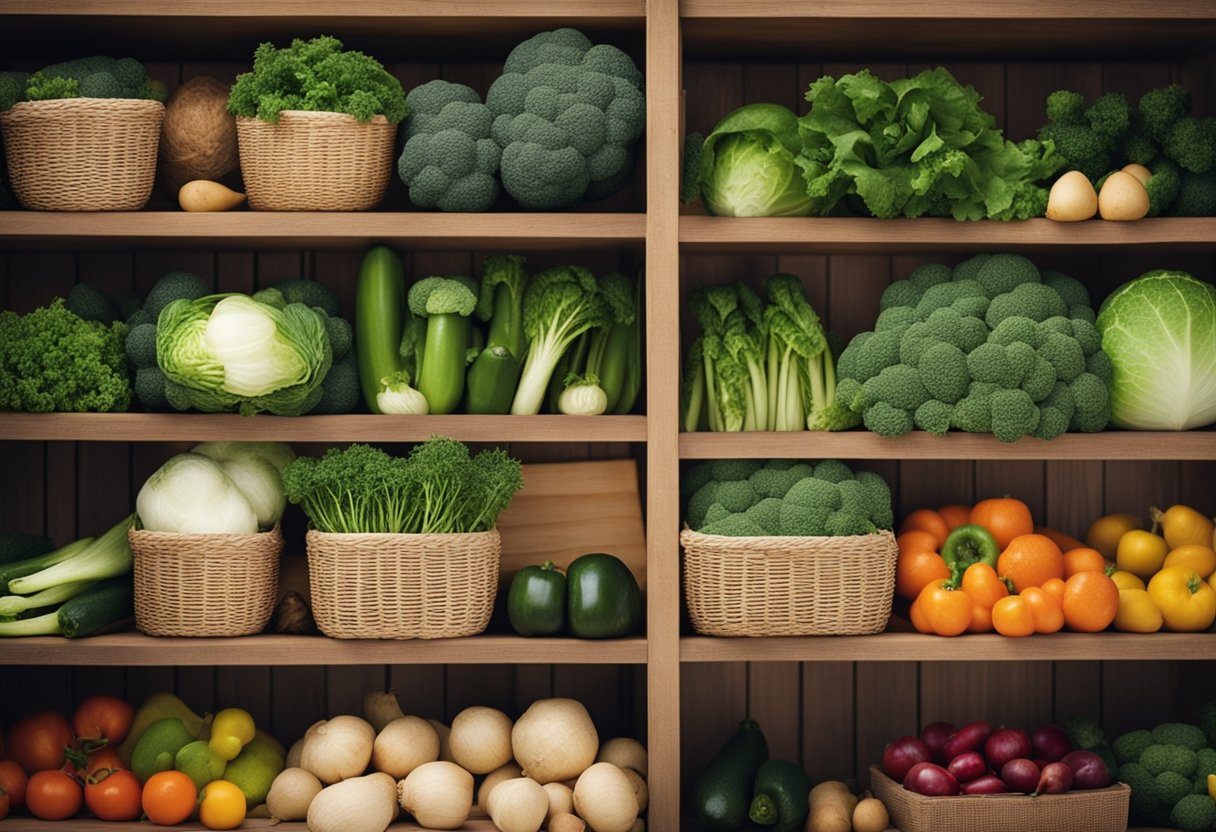
In conclusion, storing vegetables without refrigeration is not only possible but also a great way to save money and reduce food waste. By following some simple tips, you can keep your veggies fresh for longer periods.
Firstly, it is important to choose the best quality vegetables that are free from bruises and discoloration. This ensures that the vegetables have a longer shelf life.
Secondly, it is important to store vegetables in a dry and cool place. This can be a pantry, a basement, or a cellar.
Thirdly, storing vegetables in containers or bags can help to keep them fresh for longer. This can be done by using containers with lids or bags with zippers. Additionally, some vegetables can be stored in water to keep them fresh and crisp.
Lastly, it is important to know which vegetables can be stored together and which should be stored separately.
For example, onions and potatoes should be stored separately as onions release ethylene gas which can cause potatoes to spoil faster.
By following these simple tips, you can store vegetables without refrigeration and enjoy fresh produce for longer periods.
Related posts:
Frequently Asked Questions
What are some ways to store vegetables without refrigeration?
There are many ways to store vegetables without refrigeration. One way is to keep them in a cool, dry place. You can also store them in a bucket of leaves or sawdust with a loose lid. Another way is to wrap them in leaves to extend their shelf-life.
How can I preserve vegetables without a refrigerator?
There are several ways to preserve vegetables without a refrigerator. Sun drying is one method that works well for tomatoes, peppers, cucumbers, and eggplants.
Pickling is another method that can be done quickly with the quick-pickling method or more slowly with the fermentation or oil-pickling methods. Canning is another option that can be done using a water bath or pressure canner.
What are the best ways to store vegetables for a long time?
The best ways to store vegetables for a long time depend on the type of vegetable. Root vegetables like potatoes, carrots, and onions can be stored in a cool, dry place for several weeks. Squash and pumpkins can be stored in a cool, dry place for several months.
Leafy greens like kale and spinach can be stored in a plastic bag with a damp paper towel for up to a week.
What vegetables can be stored at room temperature?
Many vegetables can be stored at room temperature. Some examples include garlic, onions, potatoes, sweet potatoes, pumpkins, squash, and tomatoes. These vegetables should be kept in a cool, dry place away from direct sunlight.
Can vegetables be stored outside of the fridge?
Yes, vegetables can be stored outside of the fridge. In fact, some vegetables like potatoes and onions should not be stored in the fridge as it can cause them to spoil faster. Instead, they should be stored in a cool, dry place.
How long can fresh vegetables last outside of the fridge?
The length of time fresh vegetables can last outside of the fridge depends on the type of vegetable. Some vegetables like potatoes and onions can last for several weeks, while others like leafy greens may only last for a few days.
It’s important to choose the freshest vegetables possible and store them properly to ensure they last as long as possible.







